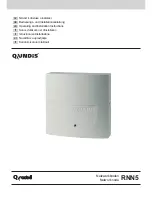
92
With MPLS TE, a network administrator can eliminate network congestion by creating some LSPs and
congestion bypass nodes. Special offline tools are also available for the traffic analysis performed when
the number of LSPs is large.
Basic concepts of MPLS TE
LSP tunnel
On an LSP, after packets are labeled at the ingress node, the packets are forwarded based on label. The
traffic is transparent to the transits nodes on the LSP. In this sense, an LSP can be regarded as a tunnel.
MPLS TE tunnel
Rerouting and transmission over multiple paths may involve multiple LSP tunnels. A set of such LSP tunnels
is called a traffic engineered tunnel (TE tunnel).
MPLS TE implementation
MPLS TE mainly accomplishes the following functions:
•
Static Constraint-based Routed LSP (CR-LSP) processing to create and remove static CR-LSPs. The
bandwidth of a static CR-LSP must be configured manually.
•
Dynamic CR-LSP processing to handle three types of CR-LSPs: basic CR-LSPs, backup CR-LSPs and
fast rerouted CR-LSPs.
Static CR-LSP processing is simple, while dynamic CR-LSP processing involves four phrases: advertising
TE attributes, calculating paths, establishing paths, and forwarding packets.
Advertising TE attributes
MPLS TE must be aware of dynamic TE attributes of each link on the network, which is achieved by
extending link state-based IGPs such as OSPF and IS-IS.
OSPF and IS-IS extensions add to link states such TE attributes as link bandwidth and color.
Each node collects the TE attributes of all links on all routers within the local area or at the same level to
build up a TE database (TEDB).
Calculating paths
Link state-based routing protocols use Shortest Path First (SPF) to calculate the shortest path to each
network node.
In MPLS TE, the Constraint-based Shortest Path First (CSPF) algorithm is used to calculate the shortest, TE
compliant path to a node. It is derived from SPF and makes calculations based on the following
conditions:
•
Constraints on the LSP to be set up with respect to bandwidth, color, setup/holding priority, explicit
path and other constraints. They are configured at the LSP ingress.
•
TEDB
CSPF first prunes TE attribute incompliant links from the TEDB and then performs SPF calculation to
identify the shortest path to an LSP egress.
Establishing paths
When setting up LSP tunnels, you can use two types of signaling: CR-LDP and RSVP-TE. Both can carry
constraints such as LSP bandwidth, some explicit route information, and color and deliver the same
function.















































